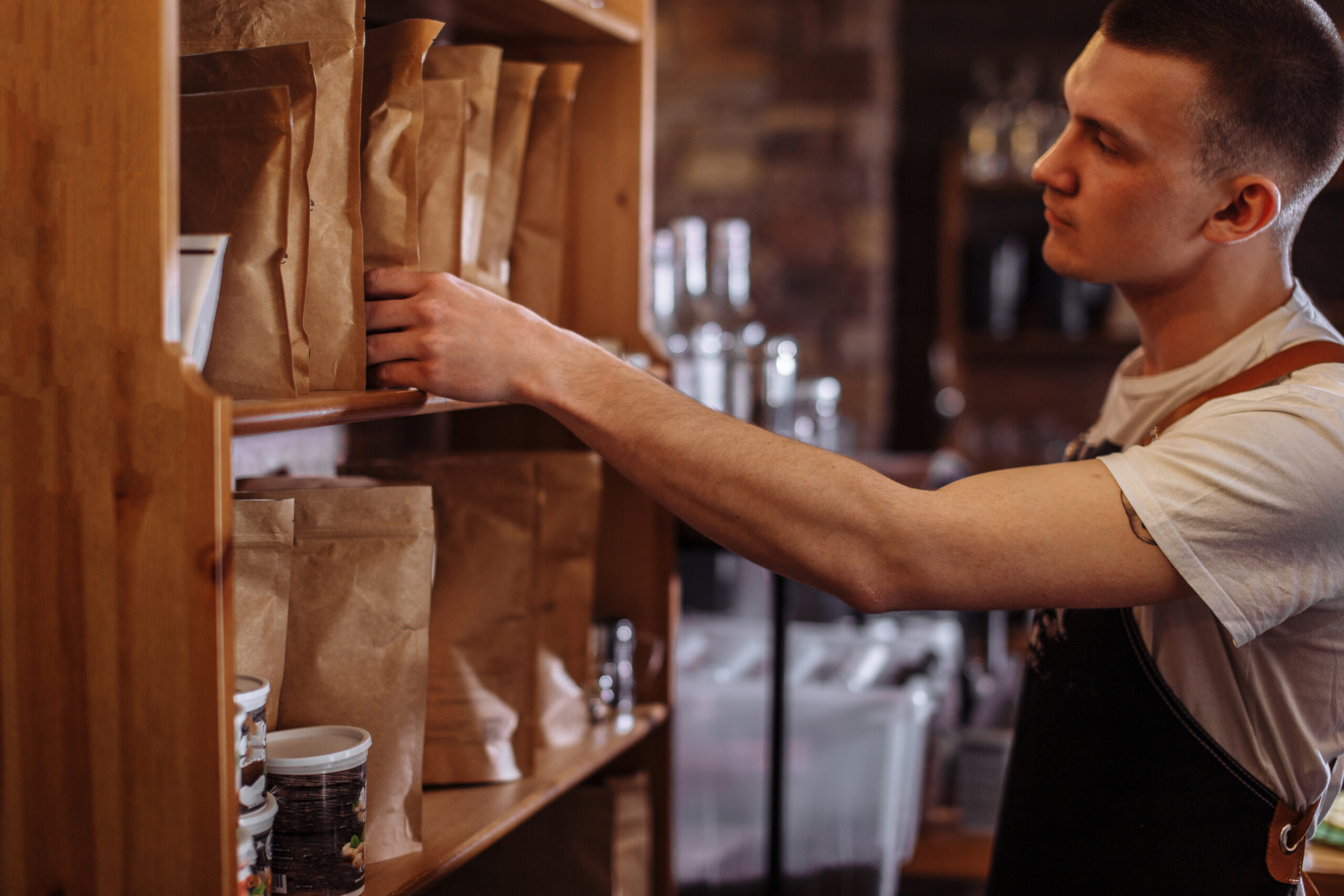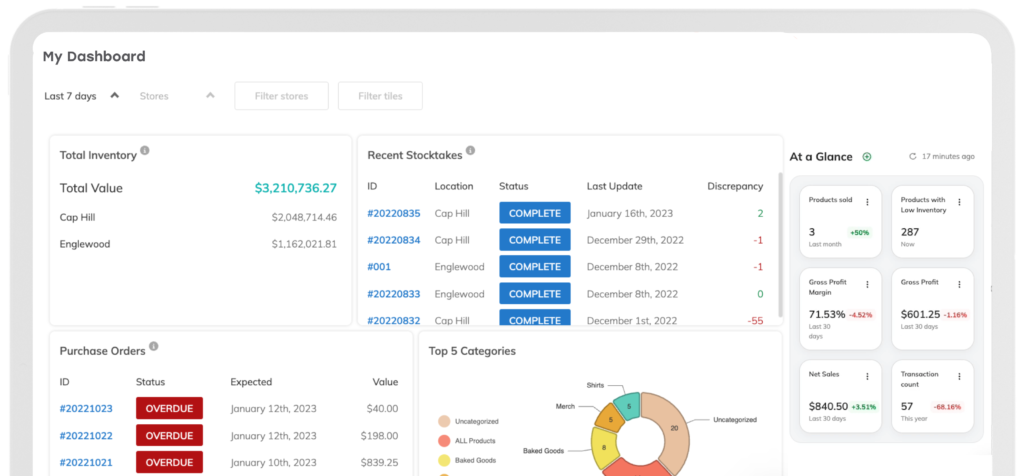
What It Really Takes To Run Your Coffee Shop Back Office Smoothly
A coffee shop’s success doesn’t hinge on latte art and great customer service. It depends on what’s happening behind the scenes. From cafe inventory control to employee scheduling, your back-of-house (BOH) management is a big part of what keeps baristas energized and your customers satisfied. After all, your barista can’t craft the perfect coffee if you’re always running out of oat milk or the morning shift is consistently understaffed.
If you want your café to run like a well-pulled espresso shot, read on for everything you need to know about managing your coffee shop business and optimizing your back office.
What You'll Learn In This Blog
Why Is Coffee Shop Back Office Management Important?
Consistent operational efficiency
Back office systems are the foundation for consistent, high-performing front-of-house (FOH) management. When your staff schedule is balanced, inventory is in stock, and the espresso machine is properly maintained, your team focuses on creating a memorable customer experience.
Operational efficiency also plays a huge role in coffee shop staff morale. Customer satisfaction follows naturally when your shop is well-run and your staff are happy. A barista who doesn’t have to scramble for decaf beans or juggle an unexpected double shift will deliver quicker, friendlier service.
Preparing for expansion
Whether you’re opening a second location, launching an e-commerce store, or adding event services, having a streamlined back office is a must for scalability. Coffee shop expansion isn’t just about hiring more people; it means replicating what works without duplicating inefficiencies.
Strategic planning for growth means building systems now that will handle more later. A coffee shop that preps for scalability with flexible, tech-enabled workflows will be better positioned to grow without losing its unique charm.
Power Up
Discover eight different coffee shop expansion strategies to boost your profits and reinforce your business.
Harnessing technology for continued improvement
Back office software should offer insight into your business, not just be a tool for efficiency. The right tech stack shows you what’s working, what’s not, and how to fix it. Many modern POS systems, such as Clover or Square for Restaurants, include detailed analytics dashboards showing top sellers, low-performing menu items, and hourly traffic patterns.

Responsibilities Of The Coffee Shop’s Back Office
Staffing and scheduling
A cafe owner’s back office is responsible for creating fair, efficient schedules and making sure your coffee shop staff is prepared for the busy day ahead. Good employee scheduling accounts for availability, labor law compliance, and projected sales volume. Imagine your team arrives at their shift with clear prep instructions, well-stocked supplies, and a schedule with enough baristas to keep peak hours running smoothly. Your employees will feel supported and valued, which leads to better retention and improved service. Here’s what to keep in mind for efficient back office staff management:
- Incorporate tech platforms into your back office to handle timesheets and schedule changes. The right tools automate these processes while giving staff the flexibility to swap shifts. Freeing up your time means you will focus on growth, not paperwork. For example, if Mondays consistently show low foot traffic, you’ll know to reduce staffing without affecting service. Creating promotions to boost sales is a wise move, too.
- Standardize your onboarding process to maintain consistency across teams. Use digital training modules, shadowing opportunities, and progress tracking to effectively educate your team. Besides training your staff on the menu and promotions, focus on topics like food safety, hygiene, and first aid so they’re prepared for anything that comes their way.
- Cross-train staff to maximize scheduling flexibility. Training employees is another back-office function that pays off on the floor. Staff who know your menu, your coffee equipment, and your tech platforms perform better. Baristas who also prep food or help with cleaning ensure smoother shifts when someone calls out or traffic spikes unexpectedly.

Product assortment
Back office teams are responsible for what makes it onto your shelves — or what stays off them. Optimizing your product assortment is key to better menu planning, finding a balance between popular staples and rotating new items while avoiding overstocks or stockouts. For example, you might keep three core muffins daily and rotate a weekend-only flavor when your shop gets the most traffic.
Consider a quick internal memo or a weekly taste test to keep employees up-to-date on new items and upselling opportunities. Everyone on staff needs to know the menu items inside and out to run a successful coffee shop. That includes training the team on new products so they know what to sell and how to sell it. Knowing which products are made in-house and which ingredients are sourced locally empowers your team to make a stronger pitch when customers ask for recommendations.
Bringing in outside products, like pastries from a local bakery or ethically sourced high-quality coffee beans, also falls under back office decision-making. You’ll need to coordinate with the supplier, track sales performance of the new items, and align all product-led marketing with your shop’s brand to successfully sell to customers.
Power Up Podcast: Sagebrush Coffee
Product-led marketing is essential for Mat’s business, since his model is buying upfront for the year. Tune into Mat’s conversation with Sean to learn why opening up so many sales channels works for him.

Financial management
A well-managed coffee shop tracks fixed costs that don’t change from month to month, like rent and insurance premiums, as well as variable line items that include food costs, like buying coffee beans and milk, or labor costs. Analyzing these costs month-over-month and year-over-year offers valuable insights to make data-driven decisions that fuel growth and fiscal health.
For example, if your weekly coffee beans cost spikes after a menu change, that’s worth investigating. Did you add a new drink with a double shot? Are baristas over-pouring? Did economic fluctuations lead to a change in supplier costs? Monitoring these variables helps maintain margins and avoid surprises at the end of each fiscal period.
Tools like QuickBooks simplify the financial picture, while integrated POS systems offer real-time sales-to-cost ratios. Even small changes improve profitability, so treat this data seriously.

Efficient inventory management
Properly balancing stock levels makes or breaks a coffee shop. The back office is responsible for setting min/max levels, reordering supplies, and ensuring nothing goes to waste. Say your house-made chai syrup regularly runs out on Thursdays, but it’s supposed to last until Saturday. This means you’re underestimating demand or need to adjust your reorder schedule.
Efficient inventory management takes historical sales data into account to predict needs and avoid stockouts that hurt your bottom line. Follow these key inventory management best practices for a streamlined back office:
- Avoid manual errors by automating order reminders and tracking in-stock levels. Order management systems track supplier prices and automate purchase orders so you don’t accidentally overstock. Automated inventory tools even track expiration dates, rotate stock, and maintain proper storage to avoid spoilage. Leveraging automation means you’ll reduce last-minute supply runs and customer disappointment. A cloud-based system also allows you to track inventory across multiple sites through one dashboard, so you maintain correct inventory levels at all your locations.
- Use data to evaluate which items bring the best margins. Drop low-performers or rework ingredients to reduce food waste. You’ll also need to consider the number of items on your menu, as less often means more. Let your staff master a more limited selection instead of attempting to juggle too many menu items. By identifying trends, like the most popular day for croissants or the slowest hours for drip coffee sales, you’ll make informed decisions about coffee shop staffing and ordering. Likewise, noticing a spike in cold brew sales during spring could inform your next purchase order.
- Keep detailed records for legal compliance. Accurate tracking also helps with efficient coffee shop management, regulation compliance, and transparency. If you get audited for food safety, you’ll want clean records of what came in, how it was stored, and when the product was sold to customers.
Power Up
Implement these nine inventory management hacks for coffee shops to maximize revenue and optimize operations.
Back-of-house/front-of-house communication
Clear communication between the floor and the back office is essential. Create designated channels for announcements and staff questions. Set up regular operations reviews, as well as feedback loops for both employees and customers.
Make it routine to go over sales reports, review food waste data, and gather customer feedback. Regular check-ins on the front end and the back end catch small issues before they become bigger problems. For instance, weekly debriefs or an anonymous suggestion box help reveal trends in customer complaints or staff frustrations you didn’t know existed.
Maybe your team finds that the new almond milk brand foams poorly, or regulars are confused by how to use a kiosk to place orders. A system for capturing and responding to customer feedback leads to real-time improvements and boosts employee buy-in.

Cleanliness and equipment maintenance
Sanitation protocols must be set and enforced by back office leadership. Whether it’s daily cleaning checklists or a monthly deep-clean schedule, consistent routines ensure compliance and customer well-being.
Routine servicing avoids breakdowns and expensive repairs. Espresso machines, coffee grinders, refrigerators, freezers, and dishwashers should all be checked regularly on a preventive maintenance schedule. Likewise, larger items essential to operations but aren’t directly related to food, like HVAC systems and working toilets, should be checked as well.
Back office staff should also stay on top of health inspections and certifications. Having digital logs and compliance records ready reduces inspection stress and keeps your team prepared.
Brewing Success Behind The Scenes
An efficient coffee shop starts with a well-run back office. From streamlining inventory to empowering your team, the right systems will transform your café from chaotic to calm. As your coffee business grows, your back office should grow with it. This keeps independent coffee shop management smooth, your team supported, and happy customers returning for more.
The Newsletter For Small Businesses
Weekly expert insights, industry trends, and inspiring stories designed to help you run your business with confidence.
The Only Inventory System That Actually Helps You Run A Healthy Business
Thousands of customers all over the world use Thrive Inventory to run a healthy business.
Thrive Inventory gives you control over all your inventory, sales channels, and metrics, allowing you to make the right decisions at the right time.
Keep Reading

The Newsletter For Small Businesses
Weekly expert insights, industry trends, and inspiring stories designed to help you run your business with confidence.
Try Thrive Inventory For Free
Add Thrive to your business and maximize your potential. With powerful and easy-to-use products,
it’s time to take control of your business and see what you can do with Thrive.




